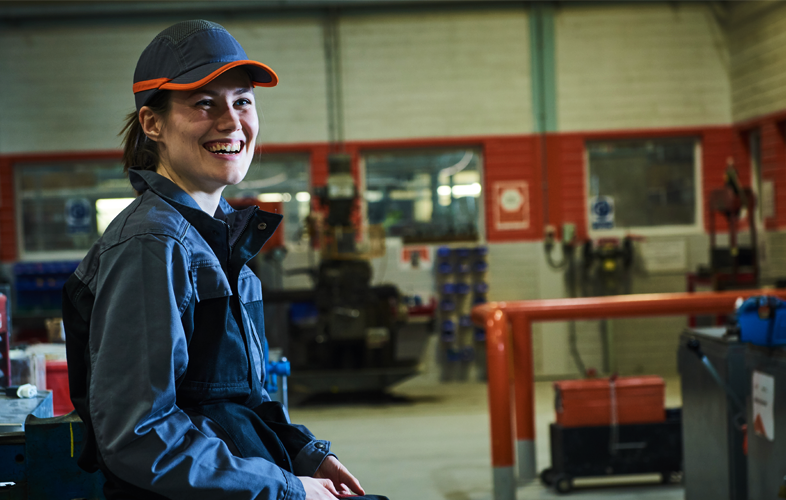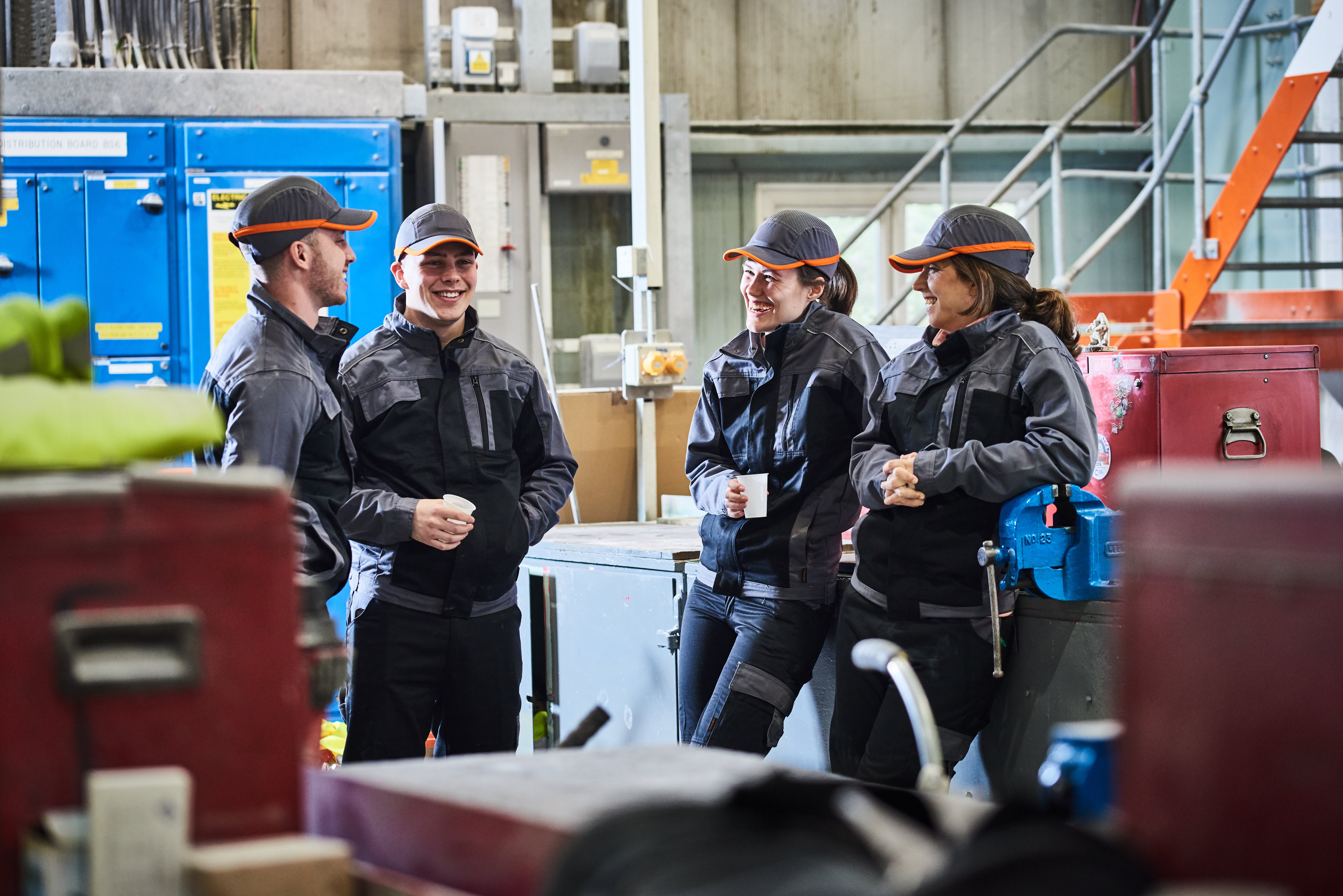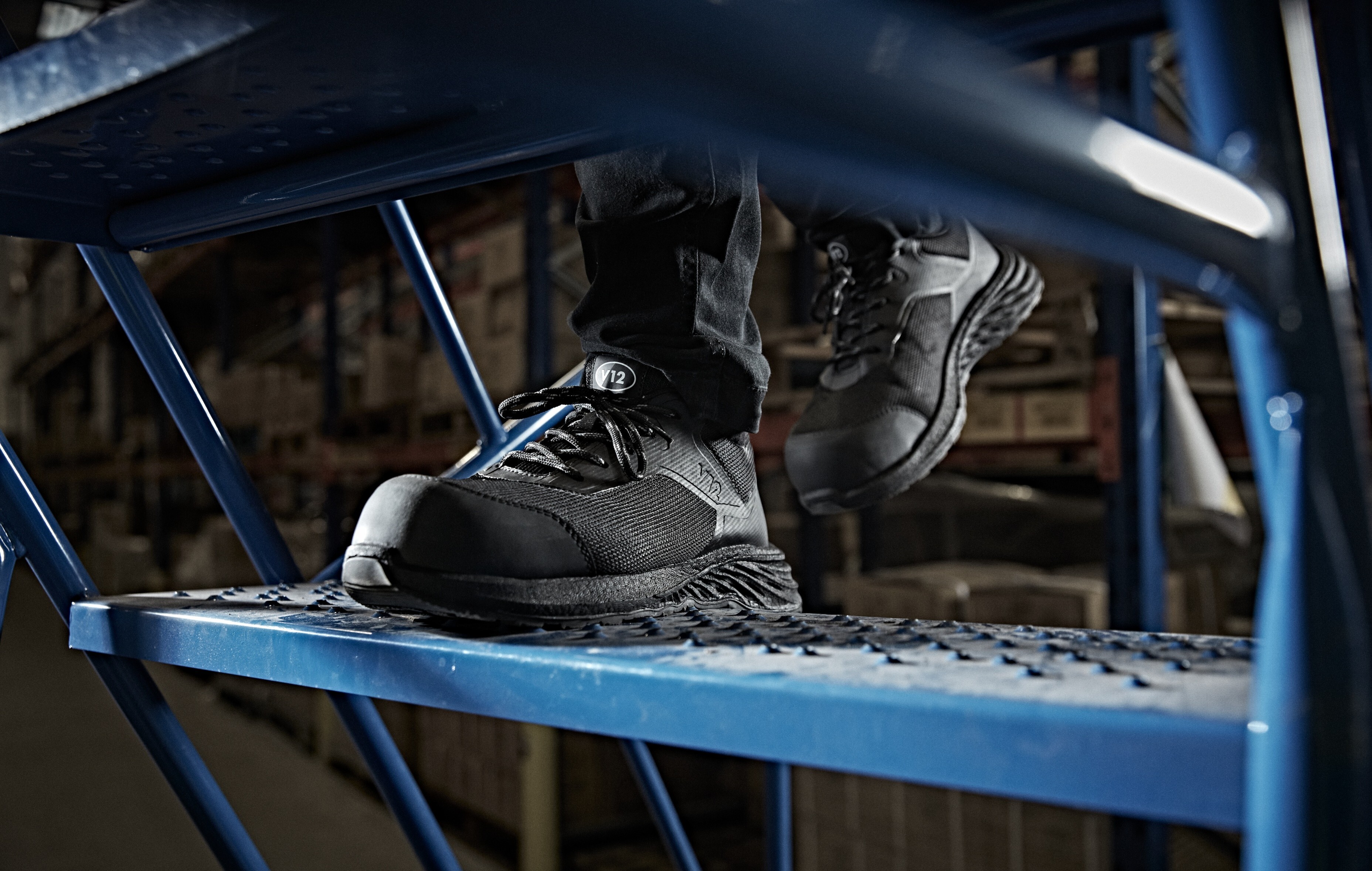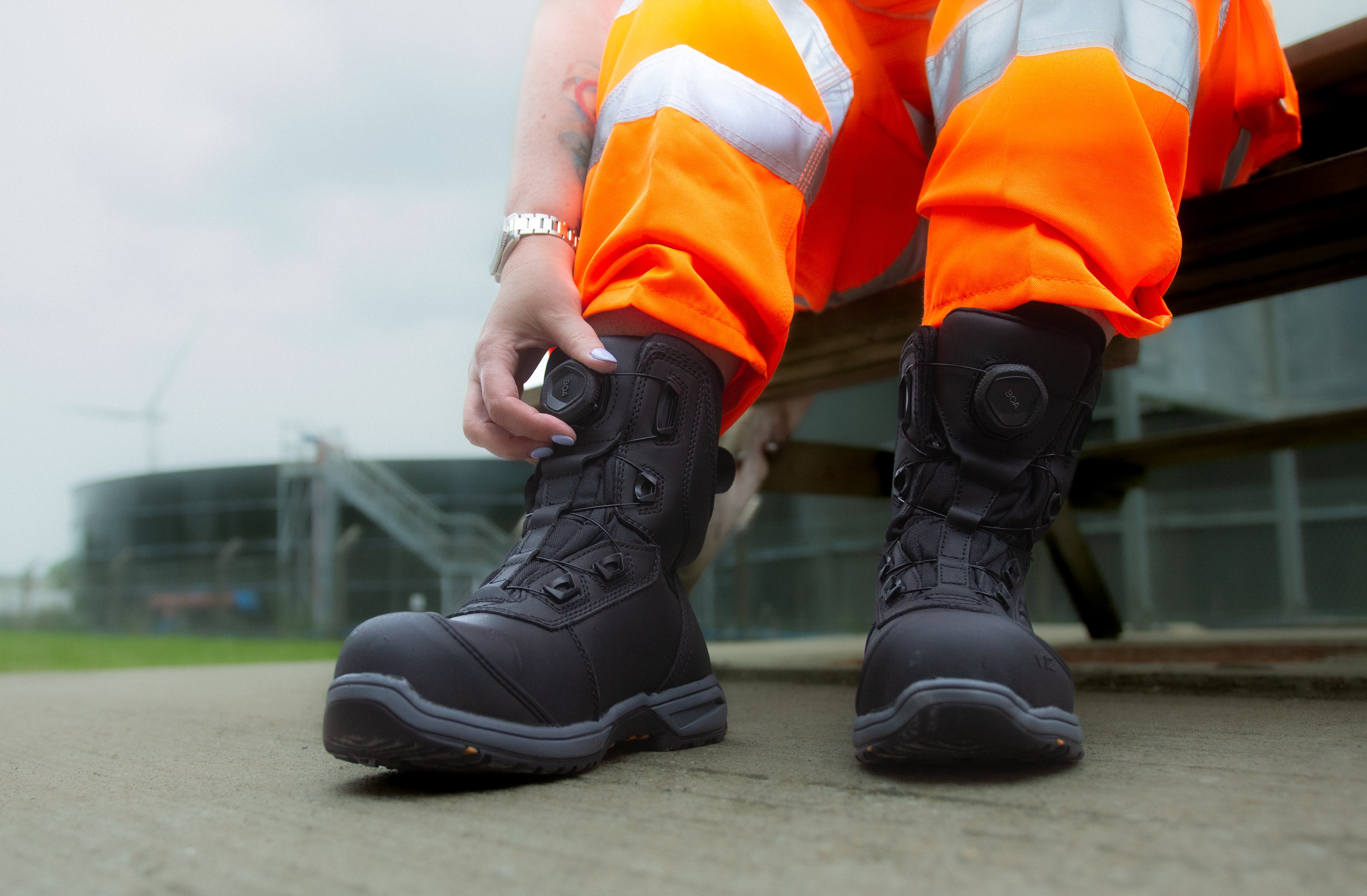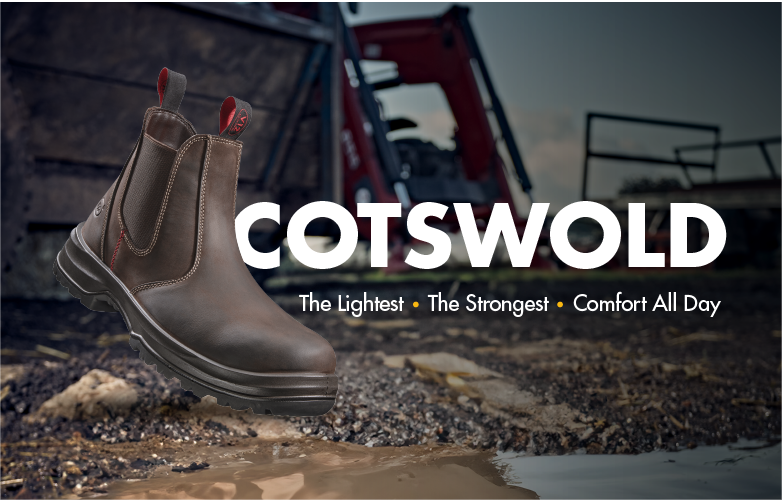For a number of years, many companies in safety-related industries across the UK have been pushing to recruit more female staff in their workforce. And while there is a lot of evidence to suggest that more and more women are seeing industries like construction and engineering as viable and accessible sectors to enter, the real battle is not recruitment. Because while attracting skilled female employees into such industries is important in the short term, in terms of the bigger picture, it’s only the beginning.
According to construction careers site Construct, only 14% of people working in construction and engineering are women. Furthermore, research from Women in Rail showed that only 16% of people who work in the rail industry are female. What’s important here is that these figures don’t only show the lack of females who’ve entered these types of industries – it could also be a reflection of how many females have entered and then left.
And there's hard evidence to show there is a serious female retention issue in a range of UK industries. A Women in Technology Survey in 2019 found that 47% of women leave their roles compared to 17% of men. And while this statistic only applies to STEM jobs such as engineering and technology, it's another historically male-dominated sector like construction and rail, so it's safe to assume the female exit rates will be similar.
In this blog, we look into the steps that companies in safety-critical industries can take to ensure their female staff feel sufficiently valued in their roles to want to stay at their place of work, rather than doing what so many women find themselves resorting to, which is to look elsewhere for a working environment where they feel more comfortable, supported and welcomed.
We’ll also highlight the reasons that so many organisations and their workforces are still not providing or promoting the gender equality so crucial in creating a sense of belonging and job satisfaction for the hundreds of thousands of female employees in safety-related roles throughout the UK. The impact that embracing this equality can have on female retention is often overlooked, yet it is such an easily achievable state of affairs with huge financial and reputational rewards.
WHY DO SO MANY WOMEN FEEL THEY CAN’T STAY IN SAFETY?
Sadly, there are multiple reasons at play, but let’s look at some of the more significant barriers which can be removed to make female employees feel like they fit in safety-critical industries and thus stay in these fields.
“WOMEN LEAVE AT MUCH HIGHER RATES THAN MEN, OFTEN BECAUSE OF THE STRESS THAT COMES WITH BEING FEMALE IN A MALE-DOMINATED FIELD.”
LACK OF SPECIFIC FEMALE-FIT PPE
In UNISON’s Gender, Safety and Health - Organising for Health & Safety guide, it’s stated that during the coronavirus pandemic ‘the issue of poorly fitting PPE came to the forefront with reports that face-fitted respiratory protective equipment weren’t designed to fit women’s faces.’
Additionally, the guide revealed that a study by Global Health Network found less than one in five female frontline health workers agreed that their protective clothing fitted them properly.
And ill-fitting respirators and gloves in this scenario isn’t really about comfort – it's about safety and the increased risk of exposure to biological hazards like coronavirus. And it really doesn’t get more serious than that does it? (Read the full document here.)
WOMEN NEED MORE THAN JUST A SMALLER SIZE
Women have different feet to men - but not just in terms of size. They are a different shape and structure. The female foot shape is narrower, women generally have a smaller and higher Achilles tendon, and they also have higher arches than men.
So, scaling down a pair of men’s boots and issuing them to a woman simply won’t be a good enough safety solution. Look below.
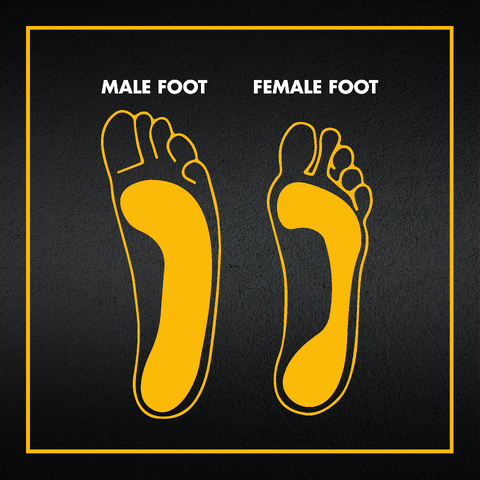
When V12 Footwear hosted a Women’s Knowledge Sharing Event to discuss Women’s PPE with the Women’s Engineering Society, the first speaker was Eleshia Turnbull, Resource Manager for London Underground, who is responsible for sourcing PPE for her workforce. She explained:
“WE WERE STUCK IN A VICIOUS CYCLE WHERE WE WERE DESPERATELY TRYING TO ATTRACT WOMEN INTO THE INDUSTRY, BUT WE COULDN’T PROVIDE THEM WITH THE RIGHT PPE. SO THEY LEAVE BECAUSE THEY DON’T FEEL COMFORTABLE BEING OUT ON SITE.”
Eleshia’s story sums up the problem perfectly. If women are forced to make do with a smaller size of men’s workwear instead of having bespoke protective equipment, they will be uncomfortable – but crucially, loose fitting clothing massively increases the risks of getting that material caught in a machine or slipping and tripping. Not offering the right equipment to a member of staff which endangers their safety and keeps them in discomfort. Can you imagine a quicker way to make someone feel unvalued at work? I can’t.
Want to see the differences between specific fitting women’s PPE rather than scaled down men’s workwear? Take a look at the image below - which one would you rather work in for 8+ hours per day?
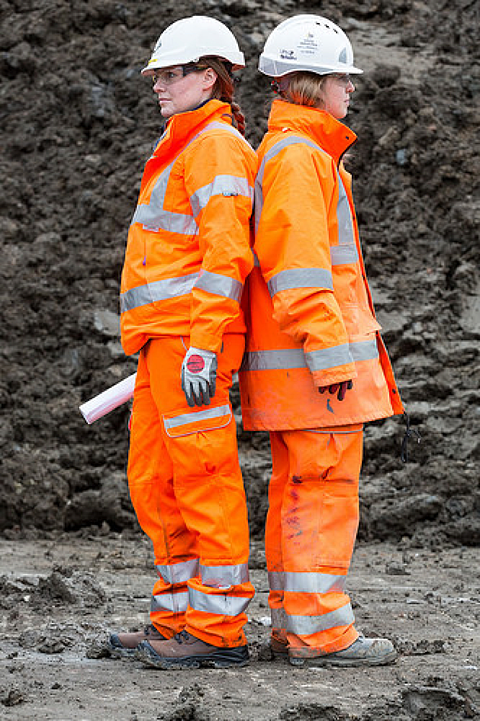
Image: Transport for London
“WOMEN’S BODIES ARE BODY CONFIGURATIONS DIFFERENT FROM THOSE OF MEN. [SIC]”
And it’s not just footwear where a specific size benefits women. A blog from construction supplier Bryson highlights other areas of PPE requiring a specific fit.
‘Women’s bodies are different in proportion to men’s. Women's hands tend to be smaller, they have shorter, narrower fingers, as well as a smaller palm circumference. This means that gloves that aren’t specifically designed for women will have an overly large palm area and the fingers will be too long and wide for an adequate fit. Furthermore, women's faces are generally smaller in length, breadth and circumference than men’s, so PPE such as protective goggles need to reflect this. If it doesn’t, comfort and safety are compromised.
However, if you examine specific female-fit gloves or eye protection online, you won’t find a huge amount. So how can we expect female workers to stay in professions when protective equipment is so scare? And it’s not just how this compromises safety – it's what it says to women about how much they are valued by their employer or the industry itself.
INVESTING IN FEMALE-FIT
On the flip-side, there are a number of women’s PPE solutions available - several manufacturers offer varied ranges of specifically-developed female safety boots, while companies like wholesalers LEO have excellent maternity workwear ranges. The problem is that many companies seem reluctant to invest in it.
WHO’S RESPONSIBLE?
Another important consideration for those sourcing PPE for their company is that it isn’t a female staff member’s responsibility to spend time and energy researching and recommending the right clothing to keep them safe at work. After all, male members of staff would very rarely have to do the same. The research and resourcing of correct PPE for ALL staff members is the responsibility of both Procurement and Health and Safety. If women can’t focus on the job that they were employed to do, it’s hardly surprising that many look for a company where they aren’t forced to do this to feel safe and comfortable – and don’t feel like they are a lower priority than their male counterparts.
Ultimately, making female team members feel valued so they can do their jobs shouldn’t be some special provision or significant adjustment – it should be standard practice. Nor should they be made to feel that they must moan – or shout the loudest – to gain this kind of equality in the workplace.
BIAS
"INDUSTRY HAS NOTHING TO DO WITH GENDER."
I spoke to Katherine Evans, a Geotechnical Manager, about what she believes employers need to do more of to improve female retention in safety-critical industries.
'It's important that employers work to address their biases. They need to acknowledge them, come to terms with them and face them head-on. Because there are still definitely significant biases in these types of industries.'
I asked her for an example of such gender bias that she's seen or encountered.
'A women may be passed over for internal roles after it is simply assumed she is not ready to take on the task - for no other reason than gender stereotyping. The role is then posted externally and filled with a man who is assumed to be able to achieve, even though they don't know him. The woman is obviously disgruntled, so quietly quits or leaves altogether, taking with her the expertise and years of service she's amassed. And now that vacant role will have to be backfilled.
It's also important for women joining a company to have other women in the room. And historically this hasn't been the case. Not enough women have had role models or have been sponsored by other women. When this occurs, it creates a sense of unity and belonging - but for this to start happening, it all comes down to good leadership.
Finally, women need to be given the chance to delve into their company's job opportunities, rather than being pushed into admin roles, which they so often are. There are so many women sitting on untapped skills and massive expertise, and their employers need to give them the opportunity to use them in different areas within the business.'
When asked if she thinks there is cause for optimism despite the work that still needs to be done in addressing the gender balance, Katherine is in full agreement:
'Definitely. There's now a much better level of acceptance that women are different to men. When I started, I thought I had to have a thick skin. Because I was afraid of getting harassed, I thought I needed to be hard and blunt - but that's changing. We're in a work culture now where leading with kindness, empathy and compassion is much more common, and employers are learning to not judge, to accept that people are different and realising that industry has nothing to do with gender.'
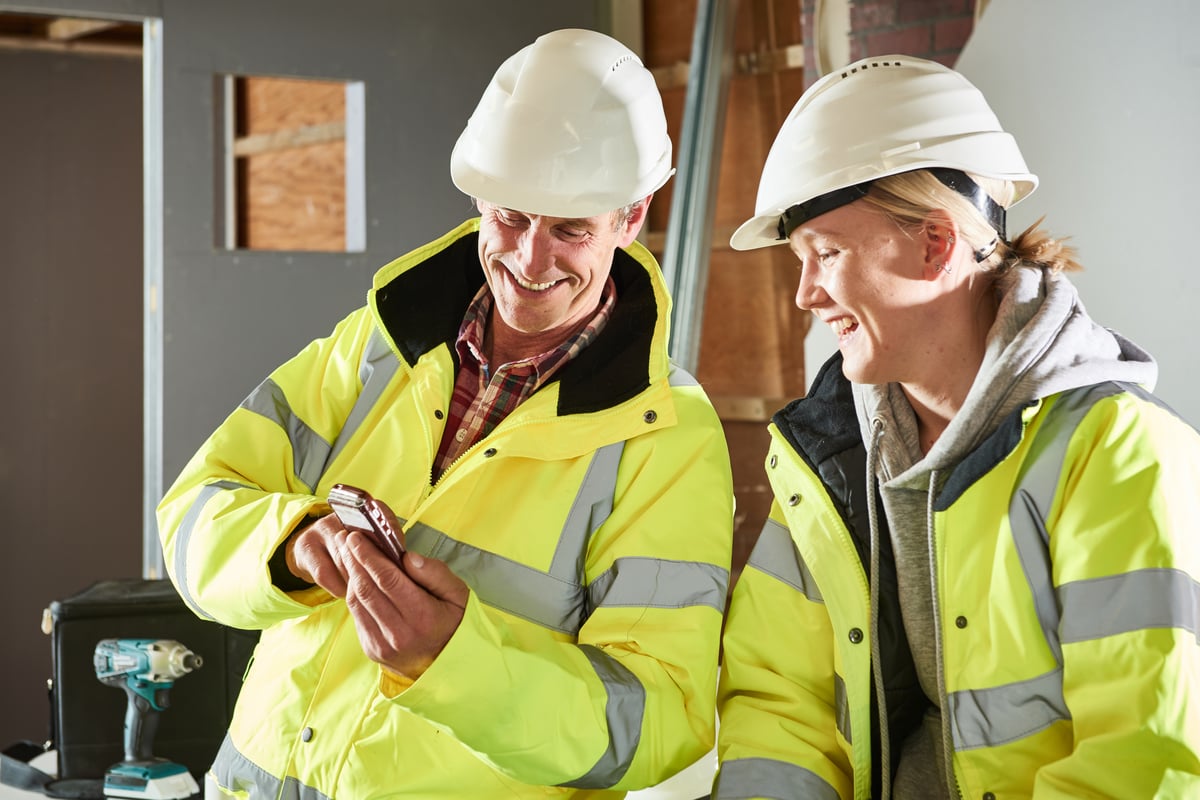
DISRCIMINATION
We’re used to hearing phrases that minimise the impact of words. Actions speak louder than words. Sticks and stones may break my bones, but names will never hurt me. But when it comes to freeing the workplace of gender discrimination, language is at the heart of everything. It’s the most direct way of showing how you value and perceive the people around you, and of course it’s the most telling evidence to show that attitudes are misaligned and need to change.
“AFTER A WHILE I BECAME RESILIENT TO IT, BUT I SUPPOSE THE REAL QUESTION IS: SHOULD I HAVE HAD TO BECOME RESILIENT TO IT?”
I spoke to Yvonne, a recruitment manager often visiting factories and construction sites to meet with HR, who experiences this type of language regularly.
‘I get whistled at and hear a lot of sexist comments when I go to certain sites. I’ve become resilient to it, but I suppose the real question is: should I have had to become resilient to it? Or should I just be able to spend my energy on doing a good job?’
When I asked her whether she thinks things are changing, she commented:
‘I think we’re getting to a place where abusive language and the attitudes they represent is deemed unacceptable. Women having to put up with sexist and abusive comments is much more severely dealt with than it was when I started, but the problem is that it’s still happening – it's just being called out. What we need is for that behaviour to not occur in the first place.’
So how do people unlearn and fix such deeply entrenched habits?
Firstly, as Yvonne outlines above, it's crucial to call it out. Yet sadly while this behaviour has begun to be called out, you will find that predominantly, it is the women themselves (if they feel comfortable to do so) who are doing the calling out as a result of the negative behaviour directed towards them. Likewise, it’s often other women who overhear or see sexist or misogynistic behaviour who are more likely to step in and challenge this behaviour. Unfortunately, it is less likely that a male will challenge their own peer.
Having said this, it’s important to note that not all men are responsible for sexist behaviour or hold and promote discriminatory attitudes in safety-critical sectors. But clearly there are enough men that do, otherwise this problem wouldn’t be so deeply-rooted that it causes countless women to avoid entering or remaining in the industry for which they trained for years.
Until this behaviour ceases occurring in the first place, the responsibility must be on everyone to call out sexist behaviour and support those who face this type of discrimination, because until this happens as the norm, it remains an ‘us vs them’ situation, rather than a collective alliance against inappropriate gender prejudice, regardless of that gender.
DEALING WITH SEXSIM CLAIMS SERIOUSLY
Individuals should feel as though an employer will support them through any abuse or prejudice at work and that the conduct they’ve been subjected to or victim of is not permitted in any workplace ever. No exceptions.
If women don’t feel comfortable to confide in the company, then not only does it not stop the behaviour and women are forced to suffer in silence, often the behaviour escalates because it has gone unchallenged and unchecked. And this discrimination can reach quite horrifying levels. And we aren’t talking hypothetically here. If you still need convincing, read this article, and you'll see that misogyny kills.
Any employer’s main takeaway from this should be - to reiterate the start of this section - take it seriously. Every time it is reported. Follow your company’s disciplinary policy and don’t ever be tempted to victim-blame. Because then you won’t be solving the problem – you’ll become part of it.
DISCRIMINATION ON THE RISE
In an article from Planning, BIM & Construction Today, Samuel Hunt, Co-Founder CEO of MaterialsMarket.com gives his view about sexism in construction.
“Research suggests construction professionals are hugely affected by sexism, and that instances of discrimination are on the rise. Women leave at much higher rates than men, often because of the stress that comes with being female in a male-dominated field.”
Given these kind of accounts then, it’s clear that retaining women in safety industries is not just about getting boots and gloves with the right fit. It’s about getting attitudes with the right fit.
“IF A COMPANY HAS MORE WOMEN, IT GETS MORE WOMEN.”
We spoke to Ian, a civil engineer for a UK construction company about the impact of good female representation. He said:
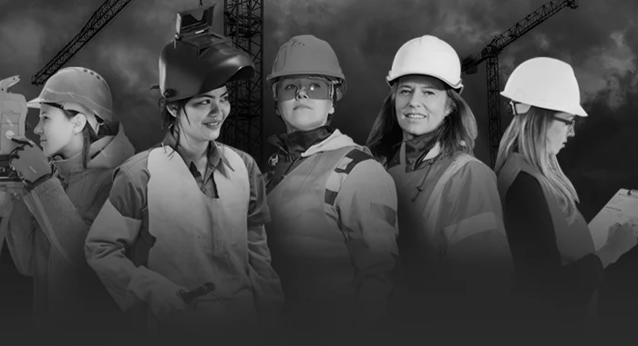 ‘When companies recruit and retain its female staff, it sets the example for new female members coming in that there are other women in the organisation who all have just as much right to be there as men. And that creates an inclusive gender culture. So the more women you have, the more you get.
‘When companies recruit and retain its female staff, it sets the example for new female members coming in that there are other women in the organisation who all have just as much right to be there as men. And that creates an inclusive gender culture. So the more women you have, the more you get.
And this makes sense from a business perspective too, because women bring an immense number of skills, knowledge and talent with them. And I see evidence of it every day – all the women I work with and for are all great communicators, efficient and incredibly skilled.’
ADEQUATE SANITARY FACILITIES
Late last year, the Health and Safety Executive announced that construction sites will be required to provide sanitary disposal facilities in women’s toilets. This will mean that Health and Safety Inspectors will be following updated guidance to ensure that appropriate welfare facilities have been put in place as part of their inspections.
The new guidance is a huge step in the right direction for making women feel more welcome in the construction industry - it's a shame it has taken until 2022, but it's important nonetheless to applaud and celebrate these changes as they are made.
Furthermore, a 2018 survey of construction union Unite members found that on 17% of sites, there were no separate facilities for women workers. Hardly surprising then that this and other related industries have suffered from poor retention of female staff.
MAKING MENSTRUATION AN ACCEPTABLE TOPIC OF DICUSSION
A recent Mental Health report by Benenden reported that both employers and employees agree that in the workplace, there is still a lot of stigma around menopause. Discussing menopause and asking for support is a difficult conversation to have, especially as it is a topic that is so rarely publicly spoken about in the workplace.
But nearly half of women between 55 and 64 say that menopause affects their mental wellbeing. For something so impacting on a person’s life to be made into such an 'off-limits' subject that can’t be spoken of without anxiety or shame can only lead to one thing – a decline in mental wellbeing.
While for some, menstruation may be something of a new and unfamiliar topic for the workplace, this should not mean that it’s not spoken about. As an employer, your discomfort or lack of willingness to discuss taboo subjects should not be made the problem of the individual experiencing it. Menstruation is a fact. Not talking about it is the problem.
And a lot of it comes down to just starting the conversation, and normalising subjects that in many work environments have been either avoided or simply deemed not necessary to have. But they are necessary to have, yet there still seems to be a dangerous mix of ignorance of the biology and a reluctance to talk about it.
Employers and the workforce as a whole need to face these topics so that team members going through these experiences feel supported and understood. If you support people through these times, they are more than likely to stay with your company – or even be an advocate as a female employee to others working within the industry. Again, diversity is good for people - but it's good for business too.
WORK TO BE DONE
“AS SOON AS YOU HAVE A DIVERSE WORKFORCE, YOU HAVE A PRODUCTIVITY INCREASE.”
Women in Rail
While many companies in safety-critical industries are getting it right, there’s clearly a lot more to do to make female members of staff feel valued enough by their employers and colleagues to want to stay working in their chosen fields.
Ultimately, it’s up to companies to understand that making the workplace less discriminatory and removing barriers to wellbeing requires the whole landscape to change. Making small gestures and tweaks to policies like providing the right PPE and facilities offer some change, but the real sign that an employer is committed to gender equality in the workplace comes from a greater shift. It’s how they embrace large-scale, long-term culture changes like mandatory training to eradicate sexist attitudes, addressing gender pay-gap differences and female under-representation in management roles – and continuing to value and validate its female staff in a clear, visible way. It’s also important to adopt a collective approach and get rid once and for all of the ‘them vs us’ stance. But to overcome this deep-rooted issue, it can’t be some. It has to be ALL.
2023’s International Women’s Day is on Wednesday 8th of March. To get inspired and see how your company can promote and celebrate this year’s theme of #EmbraceEquity, head to their homepage here.

